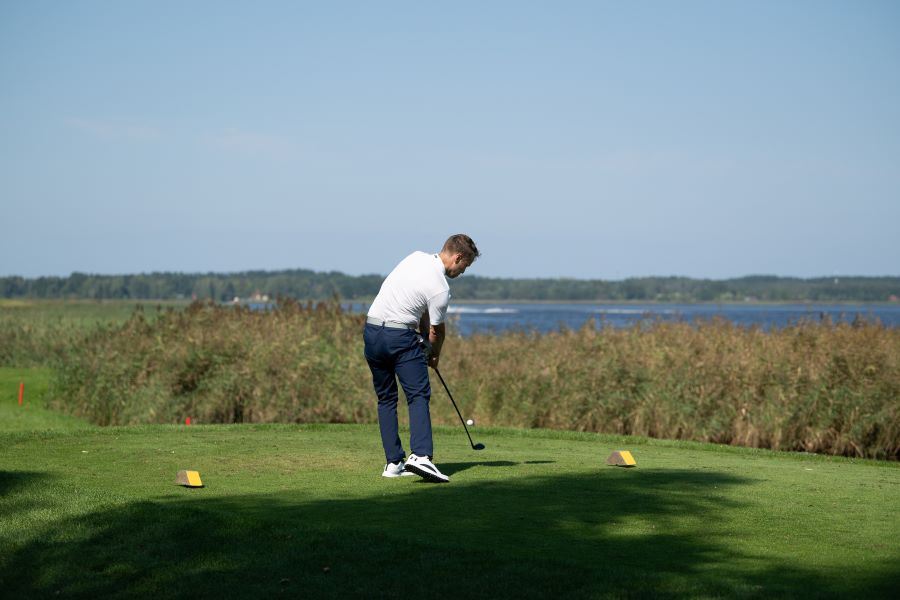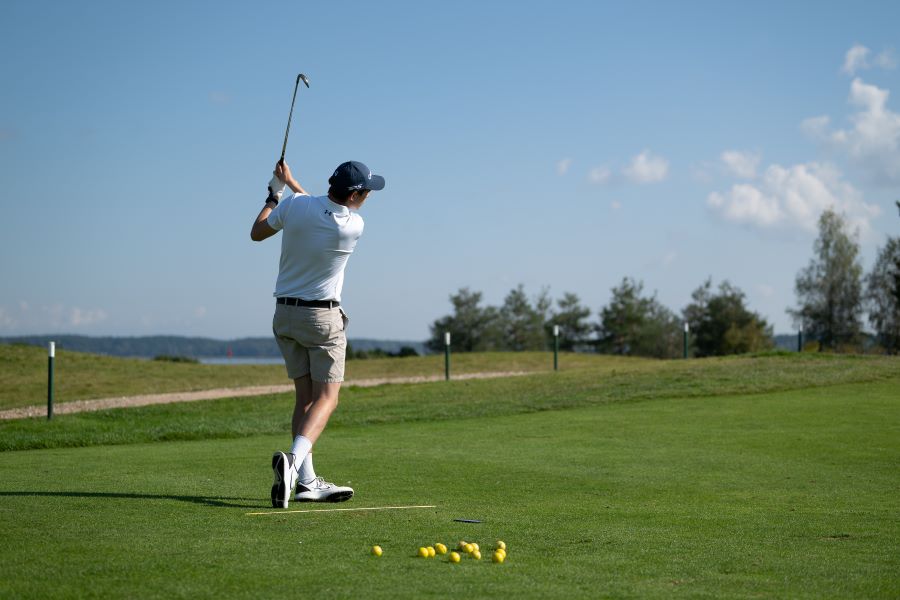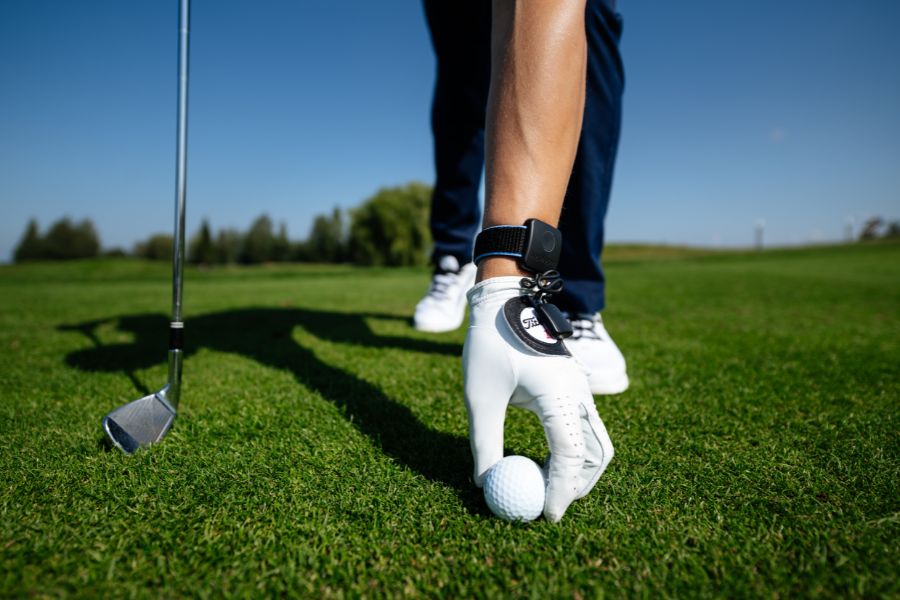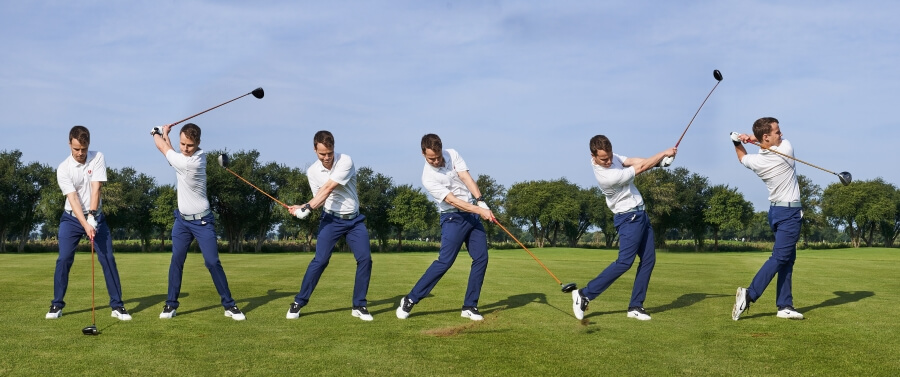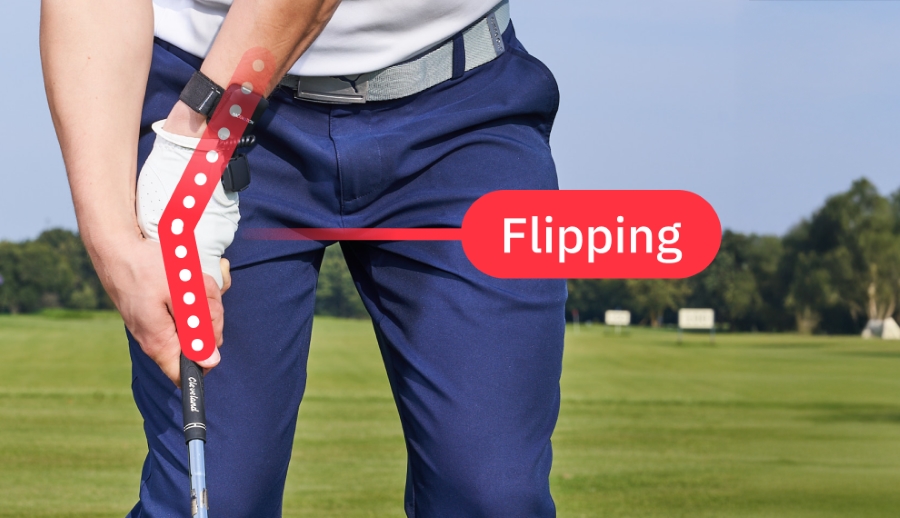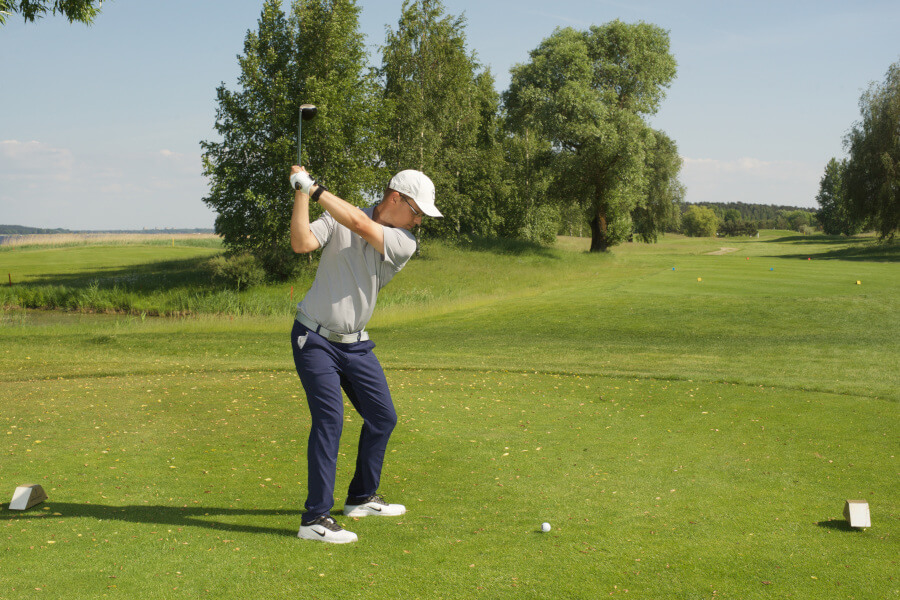Stop Topping the Golf Ball: 6 Actionable Tips & Proven Drills for Solid Contact
One of the most frustrating mistakes in golf is the topped golf shot. Topping the ball eliminates nearly all potential for it to end up where you intended.
If you’re wondering how to stop topping the ball so that you can stand over it confidently and hit your target, we’ve got you covered.
These drills and tips will help you achieve crisp, clean contact.
How to Stop Topping the Golf Ball – Key Takeaways
Topping the golf ball is caused by too much movement in the body, incorrect wrist position, and improper setup.
If you don’t have time to read the full guide right now, here are the key points to help you fix topped golf shots:
- Check your ball position; if it is too far forward on the irons and wedges, you may be making contact with the ball when the club is ascending instead of descending.
- Make sure your head stays a bit more centered, and there is not much vertical or horizontal movement in your head; think of the swing as more of a pivot, and don’t move off the ball so far.
- Don’t reach for the golf ball; keep weight balanced in the center of the feet and ensure the club has room to swing. If you are reaching and the weight is on your heels, you could top it.
- Really lean into that lead leg as you transition through the ball; this helps promote a more downward strike and a clean golf shot that travels up in the air.
- Wear the HackMotion wrist sensor as you practice.; It’s like having a coach with you while you practice.
Contents
Common Reasons Why You Keep Topping the Golf Ball
The ways to fix it are more important than the reasons why you top the golf ball. However, here are a few key reasons why you are topping in case any of them stand out to you.
- Ball position too far forward or too far away from you.
- Poor posture – mostly hanging over the golf ball too far.
- Head moving away from the ball on the backswing.
- Poor shoulder and hip rotation.
- Incorrect wrist position – not enough flexion at impact and more of a flipping motion.
- Flexing of the arms on the downswing instead of extending them through impact.
How to Stop Topping the Golf Ball?
Now that we have the basics out of the way, let’s look at how to fix your problem with topping the golf ball.
These drills, tips, and methods will work for any player; you just have to find one that works.
1. Get Your Golf Ball in the Right Spot
Before you move into more advanced swing corrections, ensure your golf ball position is correct.
You can set up the range with alignment sticks. Get the alignment sticks set up in a T and play with different ball positions until you settle on the exact spot based on the club you have in your hand.
Golfers who top the ball often have it too far forward in their stance.
| Club Type | Ball Position | Additional Info |
|---|---|---|
| Driver (Tee Shots) | Align with the heel of your lead foot | Position helps you strike on the upswing. |
| Fairway Wood (Tee) | Slightly back from the lead heel | Adjust due to the shorter shaft compared to the driver. |
| Fairway Woods (Deck) | Two balls forward from the middle of your stance | Helps to stop topping the ball. |
| Long Irons | Forward-center of your stance | Longer shafts require slightly forward positioning. |
| Mid-Irons | Middle of your stance | Ideal for precision and control. |
| Short Irons | Back-of-center in your stance | Set up for compression of the ball. |
| Wedges | Toward the back of your stance, with sufficient room to catch the ball clean | Important for optimal launch, distance, spin, and soft landing. |
2. Keep Your Head Aligned with the Ball
When you are on the driving range, you should set up an alignment stick in line with the golf ball.
Use that alignment stick as a reference point for where you should keep your head during your golf swing.
Golfers who make clean contact with the ball keep their head centered. If your head moves off that point, you set yourself up to lean back on the downswing and top your golf ball.
Keeping your head aligned with the impact zone makes it easier to induce optimal rotation and follow a controlled angle of attack to strike the ball cleanly and launch it high. A little movement off the ball is acceptable when hitting a driver.
3. Optimize Rotation
Once your ball position is correct and your head stable, you can focus on rotation.
You must transfer at least 75% of your weight onto the front foot at impact to help you rotate through the shot and square your clubface at contact.
Once you reach the top of your swing, you want to feel the force of your back leg driving the weight forward to your lead foot.
This weight shift enables you to maximize your hip and shoulder rotation to keep your club on path to impact for a clean strike and increased compression.
Take a video of your golf swing and see if your rotation looks efficient.
4. Keep Your Arms in Sequence
Your wrists, elbows, and arms must work in sequence throughout the swing to keep the club on plane and promote an effective release during the downswing.
The goal is to have your arms straight at impact, with inward pressure applied to your elbows. For right-handers, bowing the wrists at impact helps keep the hands ahead of the ball at contact.
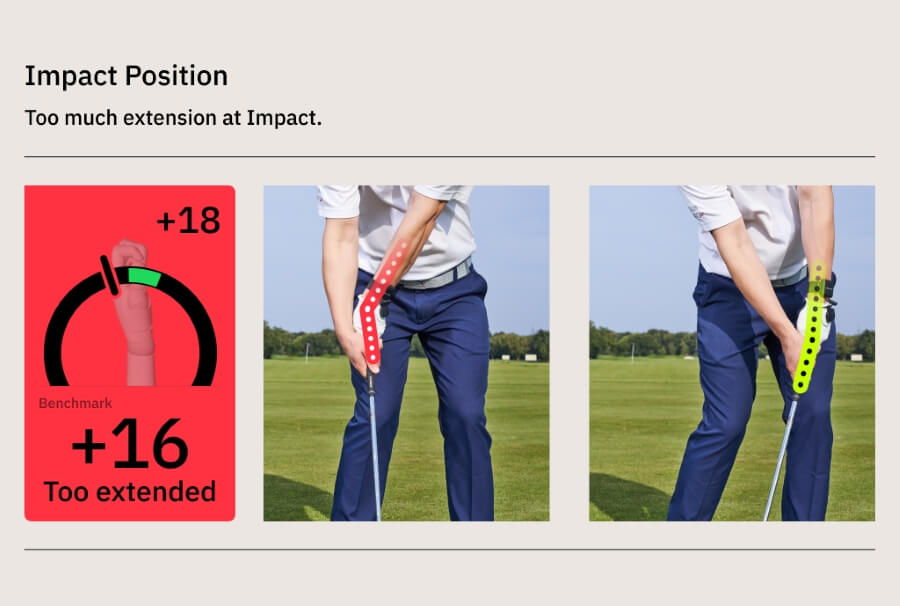
This position allows the clubface to strike the ball cleanly, generating optimal compression for a long, high golf shot.
Golfers struggling to maintain control of their wrists should consider using the HackMotion wrist sensor. It provides real-time feedback to guide you toward better wrist positioning for a balanced swing path and cleaner contact.
5. Stand Closer to the Ball
If you struggle to reach the ball at impact, it’s time to stand marginally closer to the ball.
Ensure you are a comfortable distance from the ball, and then take a few practice swings to see where the clubface is when it reaches the impact zone.
6. Get the Wrist Position Right
If your wrist position is causing issues with topping the ball, HackMotion will fix it.
The first step is to establish a baseline. Record some swings to get an idea of your wrist position at setup, the top of your backswing, and impact.
Most golfers who top the ball will notice that the wrist has a lot of extension at impact. You may notice the wrist goes from a flexed position to a bowed position just before impact. This is commonly referred to as flipping.
Make sure that from setup to the top of the swing, you do not add any extension in your lead wrist.
Once you are at the top of your golf swing, you will want to decrease any extension you had from setting up so that your left wrist gets into a flexed position.
This is exactly what most professional golfers do to achieve consistent impact positions and NEVER top the ball.
Additional Drills to Stop Topping the Golf Ball
If you have figured out your issue that causes you to top the ball but you are still struggling. Here are some additional drills to work on.
1. Little Swing, Big Rotation
Shorten your swing to a quarter or half-length, and work on boosting rotation and striking the ball cleanly.
By reducing your swing and enhancing turn, you feel how all the components of your swing gel together to help you impact the ball effectively.
Set up 10 golf balls, grab your pitching wedge, and complete one set of half-swung shots.
Don’t worry about distance or accuracy at this point. Just get your clubface on the ball cleanly.
Once you have succeeded with a pitching wedge, move on to your 7-iron, and repeat the process. You can see the simplicity of this drill by viewing the exercise below from Chris Ryan.
2. Hit in Front of the Line
The hitting in front of the line drill is designed to help you strike the ground later in the downswing than earlier. Following this methodology enables Pros to take juicy divots after hitting the ball.
Place a line of masking tape on your hitting mat, or draw a line with shaving foam on the turf.
Pretend your golf ball is placed on this line, and focus on hitting 1 to 3 inches ahead of the ball. This drill encourages you to optimize hip and shoulder turns to keep your club on a path through impact.
Start with no ball and a quarter swing, and watch where the clubface strikes the mat.
Once confident with short swings, employ a golf ball, and see the results. Next, I suggest upping it to a half swing, followed by a full golf swing, to put your practice into action.
Golf coach Eric Cogorno showcases how this simple drill plays out on the driving range.
3. Towel Drill
The towel drill from Rob Cheney encourages a more downward strike on the ball with a flexed lead wrist position. With the towel drill you’ll learn to hit down on the ball, increase yardage and stop topping.
All you need to do is place a towel behind the golf ball and ensure you don’t strike it on the downswing.
4. Casting Drill
Early casting is a contact killer. This drill helps you retain lag and correct the kinematic sequence. The drill is in the HackMotion app, so you can work on it in real time and identify if you are progressing.
Fix Your Casting with HackMotion
Train to fix casting by generating power with your core and lower body.
HackMotion Casting Drill – Step by Step:
- Slow Rehearsals: Make a normal backswing, then begin the downswing by shifting weight left and rotating hips. Don’t pull down with your arms.
- Maintain Trail Wrist Bend: Check HackMotion data on your trail wrist. Keep it extended (bent) as you initiate the downswing.
- Arms Follow: Allow the arms to drop naturally, letting the club “lag” behind.
- Progressive Speed: Start slowly, building up speed while retaining your wrist angles.
5. Contact Point
The final drill to help you stop topping the golf ball requires some foot powder spray, a club, and your golf ball.
Spray the powder onto your clubface, and after every shot, identify where you struck it.
When you top the ball, you’ll notice no marks on the clubface because the leading edge likely caught the ball.
Conclusion
Our guide on how to stop topping the golf ball reveals that your posture, ball setup, wrist and arm position, and optimal rotation are the root causes of the issue.
Therefore, the best way to hit cleaner shots is to optimize your ball position, keep your head aligned with the ball, and improve the efficiency of your rotation.
If wrist position is hampering your ball-striking abilities, consider the assistance of the HackMotion wrist sensor to improve your positioning through the golf swing.






